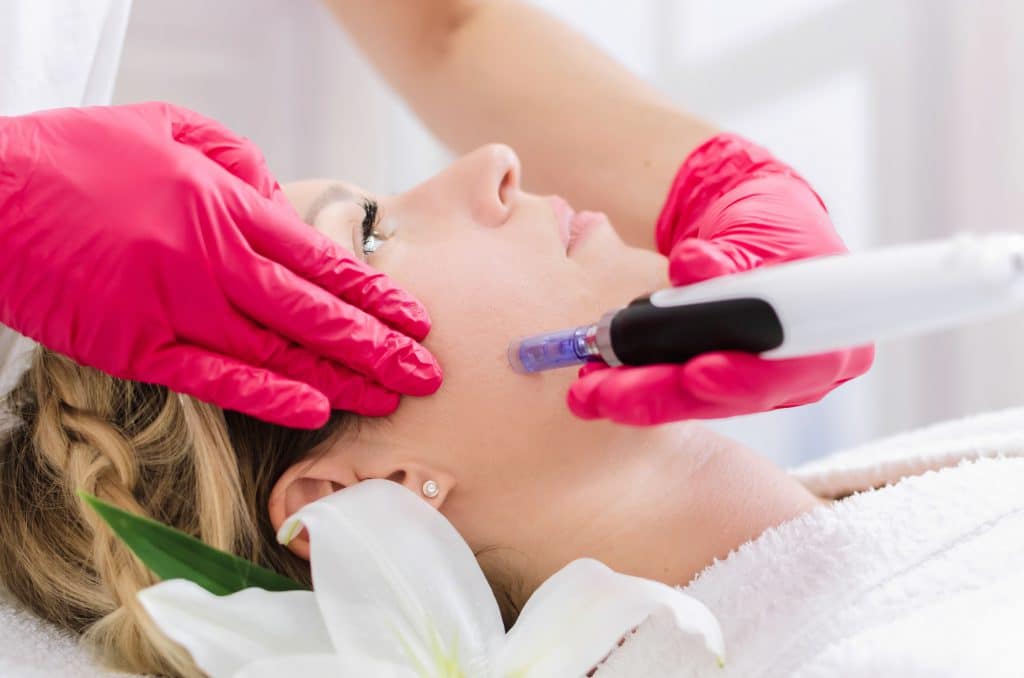Microneedling: What You Need to Know
By the end of 2019, the global anti-aging market is projected to be hit $191.7 billion. With so many skin care products and treatments available, it’s difficult to determine which ones are effective and which are a waste of time and money. Recently, Microneedling has taken the aesthetics industry by storm and has solidified itself as the must-have treatment for turning back time on your skin. This method of utilizing tiny needles to generate collagen production and promote better skin texture and anti-aging is on everyone’s “best of” list.
Microneedling 101
Microneedling, also known as collagen induction therapy, is a process in which multiple tiny needles puncture the skin to create a controlled, physical trauma to the skin’s surface. Although this sounds unsettling, dermatologists use the method to treat various skin conditions like acne scarring, stretch marks, and other skin irregularities. The process activates the deepest layer of skin, the derma, to rebuild and produce more collagen.
More on Collagen
As the skin ages, we notice the appearance of wrinkles, fine lines and a loss of skin firmness. These symptoms are due in part to the decline in collagen production. Collagen boosts skin regrowth, which fills in and smooths out fine lines and wrinkles. This essential protein keeps the skin looking firm and youthful.
The Treatment Process
During the procedure, your medical provider will make tiny puncture holes in your skin with a pen-like device. A topical anesthetic is used to reduce discomfort and most find the process minimally painful. The wounds are small and not very noticeable after the procedure. Overall, the treatment takes approximately 30 minutes.
Related: Enter to win a FREE Microneedling with PRP treatment and a ‘Protect Your Investment’ skincare package when you prepay for your Microneedling treatment or package during May*
Post-Treatment Results
The medical community considers Microneedling to be safe and efficient, but there are still some risks. The main post-treatment symptom that people experience is an irritation. After the procedure, the skin might encounter hyperpigmentation or even the appearance of blood. Bleeding is an uncommon reaction but is possible after a deep treatment.
Other side effects may include dryness, bruising, discomfort, redness, swelling, burning or peeling of the skin. Most symptoms subside within a few days. If you have active acne, infection or unstable skin in general, consult with your dermatologist before considering Microneedling.
In-Office vs. At-Home Microneedling
- At-Home: Whether you are receiving a Microneedling treatment in an aesthetician’s office or using an at-home derma roller, it is important to know the benefits of each method. If you decide to use an at-home kit, be sure to do your research and order instruments that are clean and easy to use. The biggest complaint with at-home treatments is that the needles don’t penetrate the skin deep enough, thus not triggering the body’s natural healing process.
- In-Office: In an office setting, a skincare professional will have medical-grade equipment. The use of this equipment is proven to show noticeable, lasting results. Although it’s more expensive and more invasive, the results are visible and longer term. Make sure to speak with your medical provider to determine the best Microneedling treatment for you.
Overall, the Microneedling procedure is a promising way to reduce the effects of aging. The treatment is effective in boosting collagen levels in the skin for a smooth and radiant look. To learn how Anne Arundel Dermatology can help you, call today at (443) 351-3376 or visit our website.
